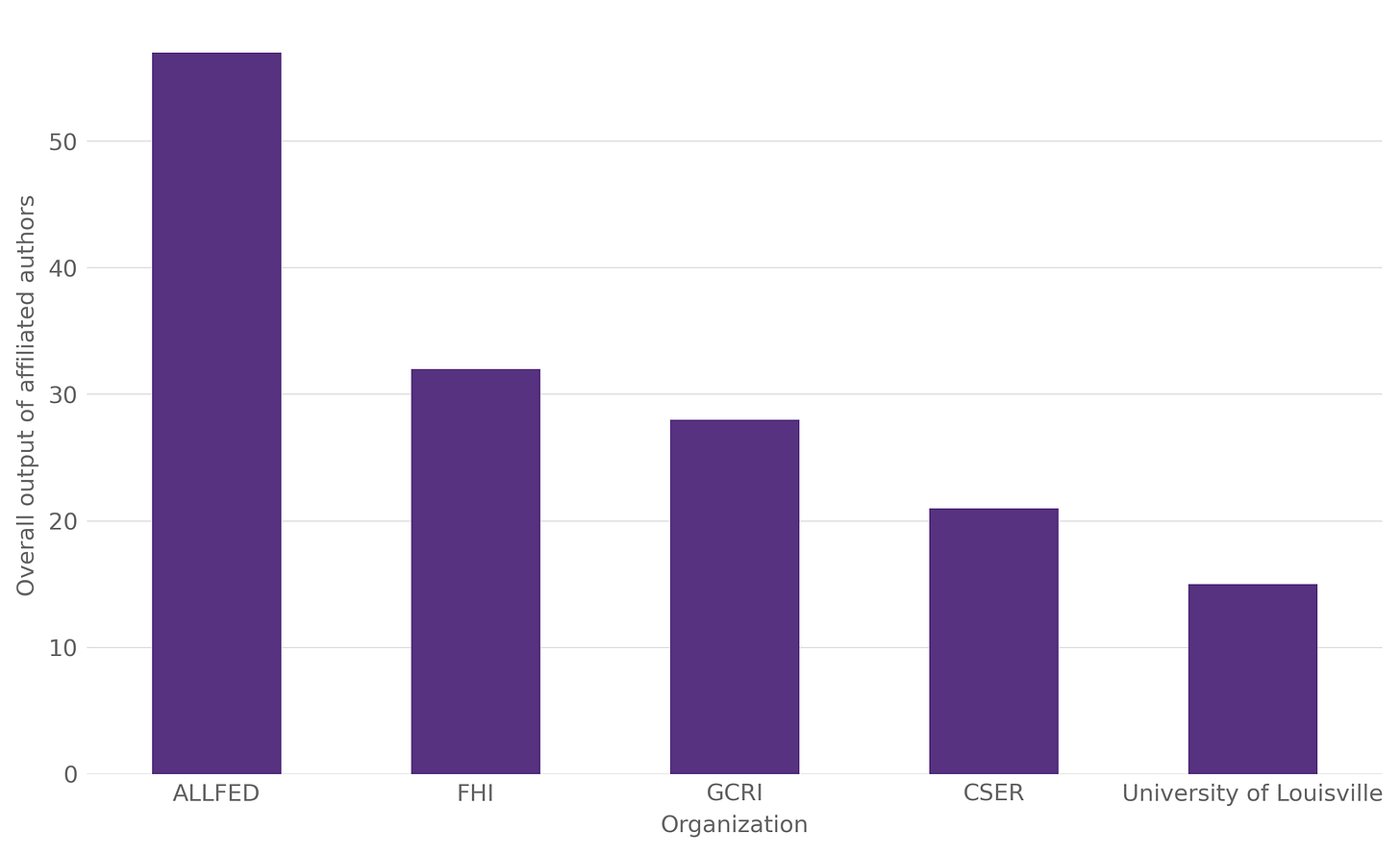The 25 researchers who have published the largest number of academic articles on existential risk
A quick overview for the field of existential risk studies

I created a list of researchers in the existential risk field based on the amount of papers they have published. In the following I provide links to their work. This is not meant as a strict evaluation of the value of their contributions to the field, but more as a quick overview of who is working on what. I hope this is helpful for people who are interested in existential risk studies, be it professionally or on a personal basis to understand the main topics that are currently being worked on. I think this could be especially helpful for people coming new to existential risk research and want to understand who the established organizations, researchers and topics are.
This is based on The Existential Risk Research Assessment (TERRA). TERRA is a website that uses machine learning to find publications that are related to existential risk. It is run by Centre for the Study of Existential Risk (CSER) and was originally launched by Gorm Shackelford. I used their curated list of papers and wrote some code that counted the amount of papers per author. You can find the code here and here are the results:
I am sorry for butchering some names, but this was due to the way I had to strip the strings to make them easily countable. As TERRA is based on the manual assessment of automatically collected papers, this list is likely incomplete, but I still think that it gives us a good overview of what is going on in existential risk studies. If you want to improve the data here, feel free to make an account at TERRA and start assessing papers.
In the following I curated a list of all the top 25 researchers with links to their Google Scholar profile (if I could find it), the main existential risk organization they work for and a publication where I think that it showcases the kind of existential risk research they do. If you have the impression that some of the people in the list could be better represented by another publication, please let me know and I will change it. 25 is an arbitrary cutoff, this does not mean that the person on 26 is any worse than the person on 25, but I had to stop somewhere. You can find the complete list in the repository.
Here is the list with the links:
Currently no affiliation, former Centre for the Study of Existential Risk (CSER)
Who would destroy the world? Omnicidal agents and related phenomena
To also have an overview of the overall output of existential risk organization I also added up the publications for all researchers that are at the same organization. This includes double counts, but I still think it is a good way to give a rough approximation of the overall productivity of the organization:
Sharing my personal reflections while categorizing research on TERRA. It appears that the surge in COVID-19 related papers has started to dwindle, seeming to decrease in 2022 compared to 2021. On the other hand, the interest in AI seems to grow. In 2022, there was a noticeable uptick in AI-related papers compared to previous years. It seemed to me that AI-related papers might even constitute around 50% of the papers I categorized as having existential risk potential in 2022, although this is a rough estimate as I lack access to categorized data.
Turning to a particular concern regarding a lack of representation of women (1 out of 25) in the list. It's unclear what precisely underlies this issue and how we can address it, but it's undoubtedly a problem. We need to improve this situation. The community should take steps to make it more welcoming and supportive for women to participate, persist, and excel. For instance, initiatives like mentoring programs specifically aimed at women in the context of existential risks could be a good option here.
I plan to revisit this project in a year's time and provide an update if the new data shows a significant shift from the one shown here.






I've mentioned this on the EA forum before, but Bruce E. Tonn's taxonomy of catastrophes in Anticipation, Sustainability, Futures, and Human Extinction (see https://www.taylorfrancis.com/books/mono/10.4324/9781003000105/anticipation-sustainability-futures-human-extinction-bruce-tonn) seemed particularly well organized, though the systems risk classification scheme from Classifying Global Catastrophic Risks had better coverage than the corresponding Tonn categories.